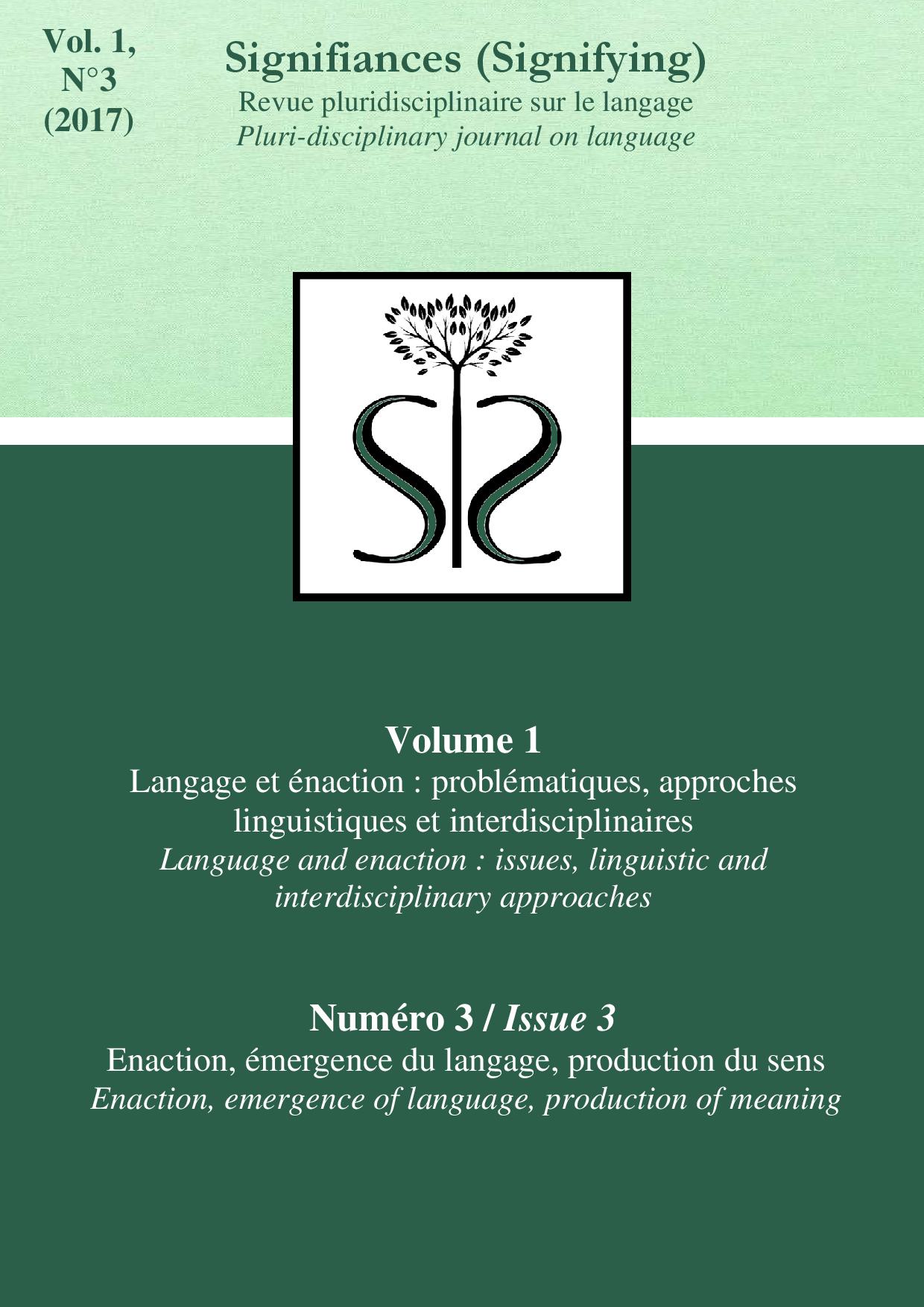The emergence of the linguistic sign : vocomimesis, symmetry and enaction
DOI:
https://doi.org/10.52497/signifiances.v1i3.114Keywords:
Sémiogenèse, vocomimésis, énaction incarnée, symétrie, systèmes miroirsAbstract
La TSG postule que les origines du signe linguistique étaient à la fois auto-référentielles et vocomimétiques. Plus précisément, des résonances vocales accompagnant des mouvements bilatéralement symétriques de fermeture-ouverture de la mâchoire ont pu être recrutées intersubjectivement par Homo pour renvoyer à la mâchoire et sa région anatomique, puis projetées homologiquement sur des parties du corps à symétrie bilatérale disposées de part et d’autre du plan médian, ou le long de celui-ci. Nous soutenons que cette stratégie de nomination du corps, qui semble encore décelable submorphémiquement en p-i-e, implique plusieurs concepts-clés énactifs (fabrication du sens, incarnation…) et neurophysiologiques (systèmes miroirs…).
STEELS postulates that the origins of the linguistic sign were both self-referential and vocomimetic. More precisely, vocal resonances accompanying bilaterally symmetrical, close-open movements of the jaw may have been recruited intersubjectively by Homo to refer back to the jaw and its anatomical region, before being mapped homologously to bilaterally symmetrical parts of the body located to each side of the median plane, or along it. I claim that this body-naming strategy, which may still be detectable submorphemically in certain PIE body-part words, involves key enactive concepts such as sense-making and embodiment, and neurophysiological phenomena such as mirror neuron systems.


